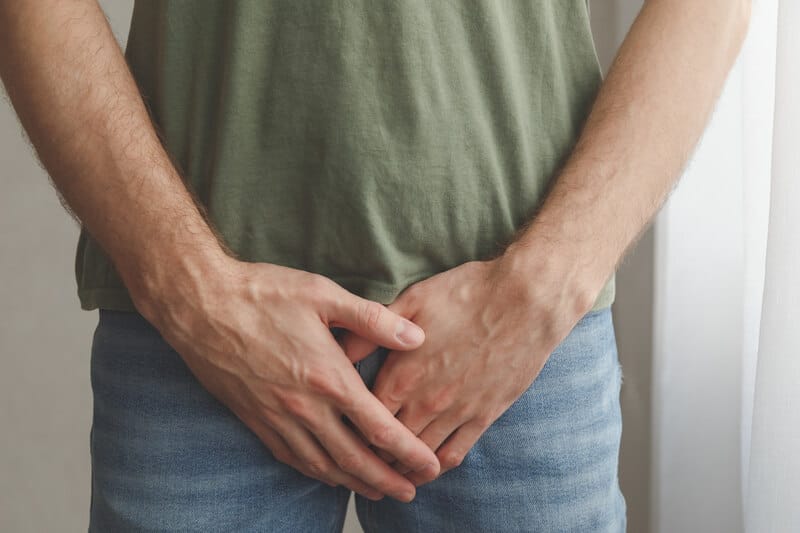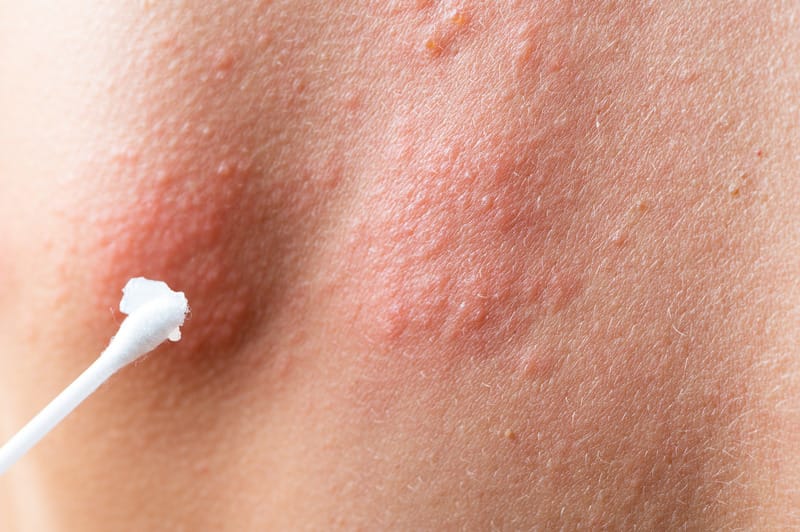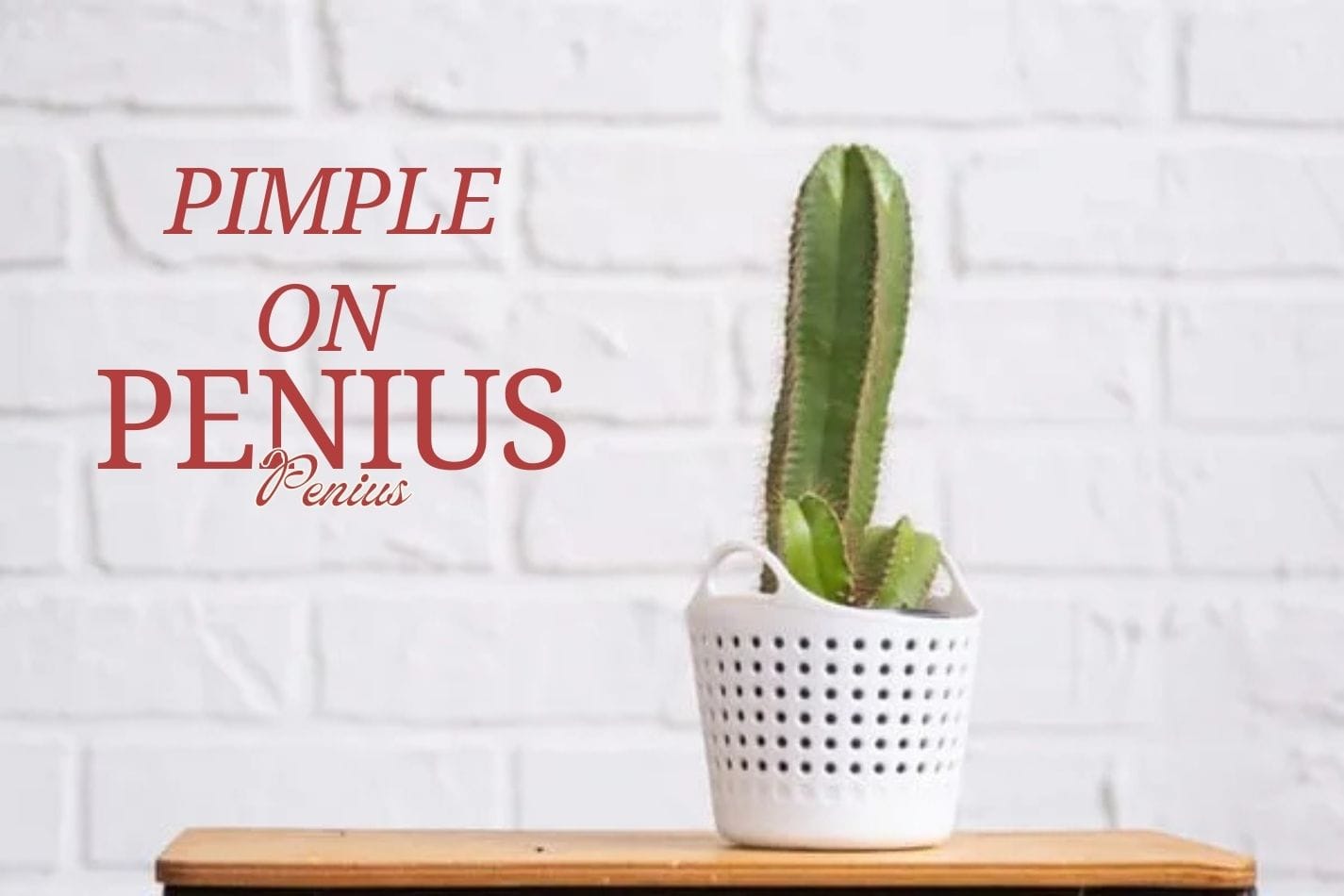A pimple on penis can be scary, but in most cases, it’s nothing serious. In many cases, the pimples on the penis are harmless and easy to treat. But if you know what can cause it, what the treatment options are, and when you should see a doctor, you’ll feel more confident and in the know, about pimples on your penis; causes, treatment and when to see a doctor in this comprehensive guide.
A pimple on the penis is a small bump that develops on the shaft of the penis (more specifically on the skin under the glans or tip).
It is just a raised bump on the skin that looks like a pimple on your face or any other body part. These pimples can pop up anywhere on the penis but show up most often on the shaft, head (glans) or around the pubic area. While it can be scary at first, most of these pimples are just benign and self-limiting.
But before you start to treat a pimple, you must understand why it is there in the first place and whether or not it warrants medical attention.
What Causes Pimples on the Penis?

There are several possible causes for acne on the penis. Most of the time, pimples are caused by clogged pores, infections, or other common skin conditions. Now, let’s take a peek at the usual suspects.
- Acne: is also known as folliculitis (clogged hair follicles). Folliculitis occurs when a hair follicle becomes inflamed most often due to an infection caused by bacteria or a fungus. The infection creates a pimple-like bump and may appear anywhere on the body, including the penis. When the opening of the follicle gets blocked with oil, sweat or bacteria, Folliculitis can develop.
Folliculitis can occur in the genital area as the result of tight clothing, excessive sweating, or abrasion from friction related to sexual activity. It often causes a red, tender bump — sometimes with a pus spot in the middle. Most often, Folliculitis is mild, goes away without treatment and does not cause scarring; however, in more severe cases, antibiotics or antifungal medications may be necessary.
- Sebaceous Cysts: Non-cancerous lumps formed under the skin are what Sebaceous cysts are. They appear if a sebaceous gland (which makes oil called sebum) gets blocked. It lets oil build up, and it creates a small, circular bump under the skin. Any of these cysts may occur anywhere on the body, including the penis.
While still usually painless, sebaceous cysts can become infected and give rise to discomfort or redness. Usually, these cysts go away on their own, but if they become infected or get big, a healthcare professional may drain them.
- Pearly Penile Papules (PPP): Pearly penile papules (PPP) are tiny, pinkish lumps surrounding the head of the penis. They are completely normal and harmless, frequently seen in men. The papules are not associated with infection or sexually transmitted diseases.
Nearly always arranged in a ring around the penis, PPP can look like pimples but, typically, are not painful and generally do not need treatment. They can create some cosmetic concerns, but they do not present a health risk.
- Genital Warts: The human papillomavirus (HPV) causes genital warts. Looks like small flesh-coloured to white raised bumps on the genital area, including the penis. Genital warts may look like pimples and vary in size and shape. Genital warts are contagious and spread by sexual contact, unlike pimples.
If you think you may have genital warts, you must see your healthcare provider. Topical medications, cryotherapy (freezing), and laser removal are treatment options. The genital warts are usually not painful, but they can be itchy or irritating.
- Herpes Simplex Virus (HSV): The herpes simplex virus (HSV) is the virus that causes genital herpes. It causes painful blisters or sores in the genital area (including on the penis). Sometimes, these sores can look like pimples, but typically they cause itching, pain, and a burning sensation.
Herpes sores are different from pimples in that they can recur and be brought on by stress, illness, or other reasons. Outbreaks can be contained, and apple cider vinegar to reduce the chances of one to someone else by taking antiviral medications. If you think you have genital herpes, see a doctor for a proper diagnosis and treatment.
- Ingrown Hairs: Pubic shaving or waxing can result in ingrown hair that grows back into the skin instead of outward. An ingrown hair can present as a red raised bump that looks like a pimple. Common genital area ingrown hairs can be painful and itchy.
Shaving or waxing carefully and exfoliating your skin helps avoid ingrown hairs. If you end up getting ingrown hair, you could apply a warm compress to help take down the inflammation. Check with your healthcare provider if the bump doesn’t go away or becomes infected.
- Acne: Acne is most often found on the face, but it may also come up on other parts of your body, including your penis. Acne is when hair follicles get clogged with oil, dead skin and bacteria. While the penis is less likely to develop acne, this can appear in other areas where oil glands are most active.
Acne on the penis usually clears up on its own, but you can treat it with over-the-counter acne treatments such as benzoyl peroxide or salicylic acid. Do not use treatments designed to clear acne on sensitive areas, and do not use harsh products that may irritate the skin.
- Allergic reactions or Irritation: Allergic reactions or Irritation of the skin sometimes cause pimples or bumps under the skin of the penis. Skin rash or bumps could be caused by certain soaps, lotions or laundry detergents due to an allergy. In such cases, the pimple-like bumps may be accompanied by redness or an itching sensation.
If you think an allergic reaction is occurring, stop using the offending product, and if the bumps fade away, you may have determined the cause. If Irritation continues, speaking with a doctor might be in order.
- Sexually Transmitted Infections (STIs): Pimples can be painful bumps or sores that look like pimples caused by some other STIs, including syphilis or chancroid. Other symptoms that these infections may cause include discharge, pain with urination, or flu-like symptoms. If you think you might have an STI, you need to see a healthcare professional right away.
Razor burn: The recently shaved skin often results in redness and irritation which leads to razor-burn bumps. they usually appear as a red, bumpy rash with ingrown hairs
What STDs and Contagious Conditions Cause Bumps on Your Penis?

Penile pimples can occur regardless of whether you are sexually active but the risk factors increase if you are sexually active. Because it may lead to STDs which may result in complications if left untreated.
Here are some STDs and Contagious Conditions that cause bumps on the penis:
- Molluscum contagiosum
- Human papillomavirus
- Chlamydia (bacterial infection)
- Herpes outbreaks
On another hand, if a pimple on penis does not look like an actual pimple, it may be due to some other reasons, some of which are harmless and recover without any medical treatment. here are some other reasons for such conditions:
When Should You Be Worried About a Pimple on Penis?
For the most part, pimples on the penis cause no harm and clear up on their own. However, there are a few signs that indicate you should seek medical attention:
- Pain: If the pimple hurts or you experience pain or tenderness from it, you may have an infected or serious pimple or bacterial infection, says Dr. Bowes.
- Discharge: A doctor should examine pimples that ooze pus, blood or another unusual discharge as signs of infection.
- Multiple Pimples: If you see a cluster of bumps or pimples that appear suddenly, genital warts or herpes may be the culprit, and in either case, you will need medical treatment.
- Itching or Burning: Symptoms of STI or another skin condition may include severe itching, burning or pain in the genital area and may need professional care.
- Persistent Pimples: Pimples that don’t go away after a couple of weeks or that keep coming back need a doctor’s diagnosis.
How to treat penis pimples
Treatment for a pimple on penis depends on what causes it. Here are some general treatment recommendations for common conditions:
1 For Folliculitis
- Warm Compress: Using a warm compress on the area can help relieve swelling and discomfort. And do this 10 – 15 minutes several times a day.
- Antibiotic Ointments: If the Folliculitis is bacterial, your doctor may prescribe an antibiotic ointment, like Neosporin.
- Avoid Irritation: Wearing loose-fitting underwear and not doing anything to place the area under stress will also help.
2. For Sebaceous Cysts
- Leave It Alone: Unless infected, sebaceous cysts usually do not need treatment. Your doctor may want to drain or remove the cyst if you develop pain or swelling.
- Warm Compress: Warm compress will help in reducing swelling and pain.
3. For Pearly Penile Papules
Pearly penile papules are commonly referred to as a normal skin variation and won’t require any treatment at all. If you worry about how they look, talk to a doctor to reassure you.
4. For Genital Warts
- Medical Treatment: Topical medications such as imiquimod or podophyllin may be used to treat genital warts. Sometimes, they can be removed by cryotherapy (freezing), laser therapy or electrocautery.
5. For Herpes
- Antiviral Medications: Antiviral medications will be prescribed by your doctor if you have genital herpes to lessen the severity and frequency of outbreaks.
- Pain Relief: During an outbreak, over-the-counter pain relievers such as ibuprofen can ease discomfort.
6. For Acne or Ingrown Hairs
- Topical Treatments: Topical treatments, like benzoyl peroxide or salicylic acid, are helpful for acne. Take notice to avoid applying these in sensitive places.
- Warm Compress: If you do happen to get ingrown hairs, try placing a warm compress on the affected area and attempting to exfoliate the skin to release the trapped hair.
7. For Allergic Reactions
- Discontinue Use: Stop using the product that causes Irritation, and if you suspect an allergy, see if the pimples improve.
- Hydrocortisone Cream: If itching and inflammation continue, over-the-counter hydrocortisone cream can be applied.
When to See a Doctor
You should seek the advice of a healthcare provider if you are worried about a pimple on your penis or if it appears to be infected. If you have a pimple, a doctor can assist in finding the reason the pimple developed and help you treat it. However, if the pimple is painful, doesn’t clear after a few weeks, or is accompanied by other symptoms, such as fever di, discharge or changes in urination, then you should see a doctor.
Conclusion:
Most of the time, a pimple on penis is nothing to worry about. Pimples are usually benign and usually resolve on their own. Yet, it is important to understand why this happens and when to go to see a doctor. However, if you’re ever unsure about a pimple on your penis or it doesn’t improve, definitely seek out medical advice. Being careful of your sexual health and being aware will aid you in taking care of any problems that do come your way.
FAQs

What is a white pimple on the penis?
White pimple on the penis is a result of a clogged pore, a sebaceous cyst, or a benign condition- usually, pearly penile papules. It's important to be aware of any changes and to see a doctor, if required, though.
Can genital warts look like pimples?
Yes, small, flesh-colored bumps that look like pimples may be genital warts. HPV causes them, and they are contagious. If you think you may have genital warts, see a doctor to be diagnosed and treated.
Are pimples on the penis a sign of an STI?
Not necessarily. Causes of pimples on the penis are harmless conditions such as acne, folliculitis or ingrown hair. Some STIs, such as genital warts or herpes, may result in bumps that resemble pimples, however. But if you’re unsure, it’s always a good idea to talk to a healthcare professional.
Can stress cause pimples on the penis?
Sometimes acne or other skin conditions can make acne worse and can cause pimples to appear on the penis. Good hygiene and managing your stress may help you avoid pimples.
How can I prevent pimples on my penis?
If you get ingrown hairs, be sure to shave or wax rarely and avoid tight-fitting clothes. Good hygiene is key to preventing pimples. Handle the skin in the genital area gently and refrain from using strong chemicals or soap.


